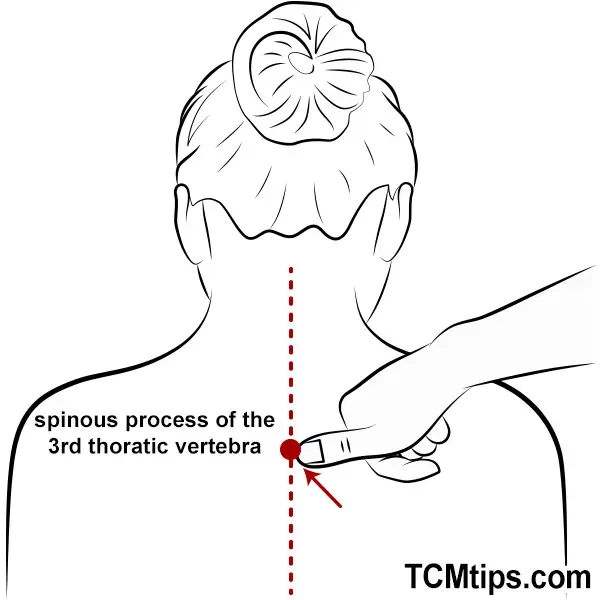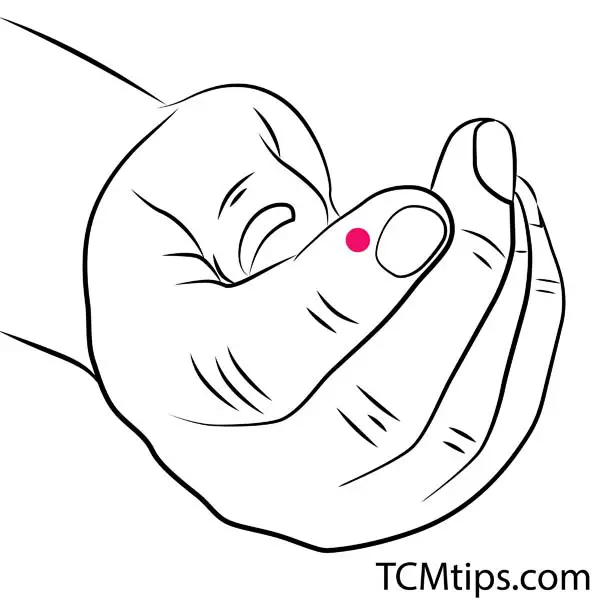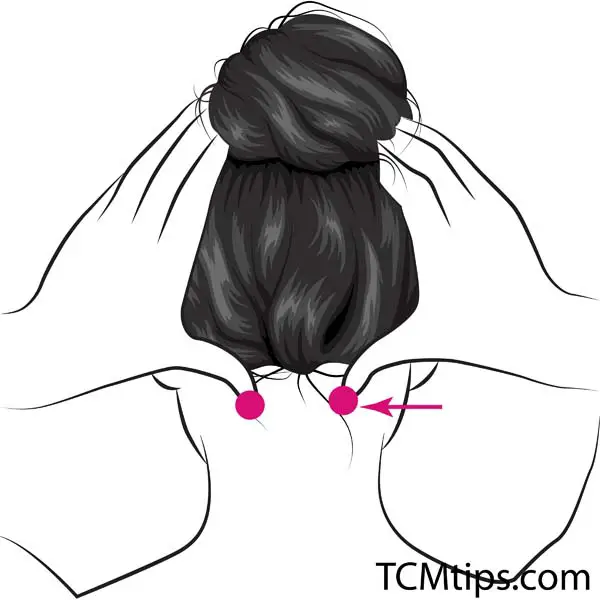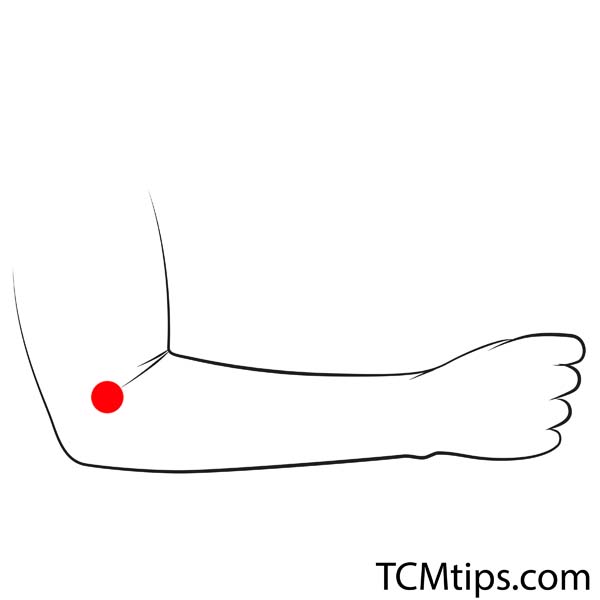Discover Natural Fever Relief: 7 Key Acupressure Points for Effective Symptom Management
Any body temperature above the normal range of 36–37°C (98–100°F) is defined as fever. A high body temperature is part of the body’s immune response to fighting the infection and is not usually dangerous. Fever is often accompanied by alternating sweats and chills, and people often feel chilled even as their body temperature climbs.
Most fevers will ease after a while, and there is not much you can do except alleviate the symptoms. While Acupuncture can help lower fever, Dr. Quyen Le believes that it’s best to figure out what’s causing the fever, and that we should take the medication if it is necessary. As you wait for your body to clear the infection, you can reduce your symptoms through natural techniques. Learning how to use the acupressure points for fever at home will provide some much-needed relief.
Are There Any Acupressure Points For Fever?
A recent study published in 2022 explored the use of acupoints for exogenous fever. Researchers applied Radix et Rhizoma Rhei and Natrii Sulfas plaster at CV-8, and Herba Ephedrae and Radix Bupleuri at GV-14. The disappearance of fever in the application group was 1.82 times higher than that in the non-application group. The rate of disappearance was also faster in the application group than in the non-application group, leading the researchers to conclude that acupoint application is an effective treatment for exogenous fever.
In addition to CV-8 and GV-14, there are many other acupressure points for fever. Here are six of the best acupoints for relieving headaches, sweats, aches, and pains, and other common symptoms of fever.
| Acupoint | Description |
|---|---|
| GV-12 | A primary point for fever in adults, located along the spine. |
| LU-10 | Useful for lung-related fever symptoms, found on the palm. |
| GV-14 | Helps regulate heat and dispel wind, located on the back. |
| LI-4 | General fever relief point, positioned on the hand. |
| LI-1 | Effective for child fever, located on the index finger. |
| GB-20 | Alleviates fever symptoms, found near the base of the skull. |
| LI-11 | Reduces fever, located on the elbow crease. |
Acupoint: GV-12 (Other Names: The Governing Vessel-12/Shen Zhu/Body Pillar)

In the realm of Traditional Chinese Medicine, GV-12 stands out as one of the primary acupressure points for fever in adults. Here’s how to locate and apply pressure to this vital point:
Locating GV-12
- Area: On the back, along the middle line.
- Specific Spot: Find it at the indentation just below the third bone bump from the top of your middle back.
Applying Pressure to GV-12
- Pressure Duration: Press firmly for about 10 seconds.
- Repetition: Repeat this 3 to 5 times for best results.
- Enhancing Effectiveness:
- Start with a warm shower or use a heating pad.
- This preparation relaxes your muscles and reduces tension, making the acupressure more effective.
TCM Therapist Ms. Mai Sogawa emphasizes these steps for maximizing the therapeutic benefits of GV-12 acupressure in fever management.
Acupoint: LU-10 (Other Names: Lung-10/Yu Ji/Fish Border)

LU-10, known as Fish Border, is an important point for clearing lung heat, excess or deficiency heat from the lung channel and organ. Dr. Quyen Le is of the opinion that it is useful for lung conditions when heat symptom is present such as sore throat, loss of voice, coughing blood. In clinical trials, acupuncture at this point has also shown promise in relieving acute attacks of bronchial asthma. It is also one of the acupressure points for children with cough.
This lung meridian point is located on the fleshy part of the palm. You can find it on the radial aspect of the midpoint of the first metacarpal bone, below the base of the thumb. Apply firm pressure while breathing deeply.
Acupoint: GV-14 (Other Names: The Governing Vessel-14/Da Zhui/Great Vertebra)

GV-14, known as the Great Vertebra, helps to regulate heat and dispel wind from the body, making it an excellent acupressure point for fever. It is one of the acupressure points for mucus in throat, while it is also used to treat conditions including febrile disease, malaria, night sweats, and swelling of the eyes.
A controlled clinical trial at the Tianjin University of Traditional Chinese Medicine showed that electroacupuncture at GV-14 is significantly more effective at fever reduction than the antipyretic drug Antondine in the fever of common cold, restoring the body to a normal temperature in 75.9% of cases.
GV-14 is located on the back, in the depression below the 7th cervical vertebra. Look for the large knobby bone at the nape of the neck, which is especially prominent when you tilt your head forward. According to Dr. Quyen Le, this is an easy acupressure point to locate and a safe point for parents to use at home, making it one of the best acupressure points for fever in toddlers.
Acupoint: LI-4 (Other Names: Large Intestine-4/He Gu/Joining Valley)

Stimulating acupoints on the large intestine meridian may help to improve the body’s natural immunity, reducing the risk of infection and subsequent fever. LI-4 is a versatile acupoint, effective for a wide range of conditions, including stiffness and aches in the muscles, headaches, runny nose, and sore throat. It’s one of the best acupressure points for fever and body pain.
LI-4, known as the Joining Valley, is located on the hands, between the first and second metacarpal bones. Dr. Quyen Le recommends it as one of the Seven Important Acupressure Points For Heart Palpitations.You Can Use In Emergency.
Acupoint: LI-1 (Other Names: Large Intestine-1/Shang Yang/Metal Yang)

Another one of the useful acupressure point for fever and cold found on the hand, the Shang Yang is located on the radial aspect index finger, just posterior to the corner of the nail.
Activating this point clears heat from the body, reducing symptoms of sore throat and fever. Acupressure at LI-1 helps to calm the spirit and bring balance to the internal organs.
Acupoint: GB-20 (Other Names: Gallbladder-20/Feng Chi/Wind Pool)

GB-20, called the Wind Pool, is an important point to treat any Wind-Cold or Wind Heat pattern. It can eliminate wind (interior and exterior), subdue Liver Yang, brighten the eyes, benefit the ears, clear heat, clear the brain. This point is known to be a useful acupressure point for fever and headache. It is also one of the acupressure points for herniated disc.
It is located where the base of the skull meets the top of the neck, lateral to the tendons of the trapezius muscle. Dr. Quyen Le explains that to stimulate this acupoint at home, place your thumbs on the nape of your neck and apply gentle pressure in a circular motion. Increase the pressure gradually to clear the head, expel heat, and calm the spirit.
Acupoint: LI-11 (Other Names: Large Intestine-11/Qu Chi/Pool at the Crook)

The last acupoint on our list of acupressure points for fever is LI-11, known as the Crooked Pond, is one of the strongest points in the body for clearing heat. According to Dr. Quyen Le, LI-11 is used in the later stages of External Wind Heat invasion rather than the early stages when LI 4 is most effective.
It may potentially be used, in coordination with a well designed acupuncture treatment protocol, to influence the following conditions: diarrhea, heavy menstrual bleeding, Parkinson’s Disease, shingles and skin problems, while serving as one of the pressure points for digestion.
LI-11, known as Crooked Pond, is a point located at the elbow. The easiest way to locate it is to bend your arm and look for the end of the crease on the outer side of your bent elbow. So the next time you’re feeling a bit too warm or are battling a cold, let Large Intestine 11 be one of the points to help you out.
How Can I Reduce My Child’s Fever Naturally?

Acupressure points for child fever, such as LI-1, are vital for providing relief. TCM Therapist Ms. Mai Sogawa recommends LI-1 for its effectiveness in treating fever in children. Here’s how to locate and use this acupressure point:
Locating LI-1
- Position: On the hand.
- Specific Location: Look at the child’s index finger on the side closest to the thumb.
- Finding the Point: Locate a small spot about 2 mm from the corner of the fingernail towards the back of the hand.
Applying Pressure to LI-1
- Technique: Gently press with the pad of your finger.
- Pressure Level: Be careful to apply only light pressure, suitable for a child’s sensitivity.
This approach ensures that LI-1 is used safely and effectively for children experiencing fever.
Does Acupuncture Help With Fever?
If you have a general understanding of acupuncture treatments, you’ll know that acupuncture promotes blood circulation, stimulating the flow of energy through the body. Although this is often associated with increased heat, you can also use acupuncture to relieve fever symptoms. Stimulating certain acupoints may help to reduce congestion in the nose and throat and relieve flu symptoms, as well as relieve the headaches and neck pains often associated with fever.
By reducing stress, increasing sleep quality, and bringing the body back into balance, acupuncture helps to bolster the immune system, making you less likely to succumb to infection or fever.
FAQ
Acupressure Points for High Fever
- Can acupressure help reduce high fever?
- GV-12 can be effective for high fever. While rest is crucial, acupressure can be attempted during periods of rest, especially if the fever is bearable. This can be done in a comfortable lying down or seated position, ensuring relaxation while applying the technique.
- How often should pressure be applied to these points?
- Apply pressure for about 10 seconds, repeating 3 to 5 times for best results.
Acupressure for Fever in Babies
- Is acupressure safe for infants with fever?
- Yes, but be mindful of their delicate skin. Use oils or creams to reduce friction during the massage.
- How gentle should the pressure be?
- Apply enough pressure to slightly sink the skin, but it should be very gentle.
Precautions and Limitations
- What precautions should be taken when using acupressure for fever?
- If the fever is high or the condition worsens, don’t force the acupressure. Take a break and consider other treatments.
- Are there any limitations to using acupressure for fever?
- Acupressure shouldn’t replace the need for boosting the immune system through nutrition and rest. It’s most effective when used early or as a preventive measure.
- When should medical advice be sought instead of relying on acupressure?
- Seek medical advice for high fevers, especially if suspecting an infection, if the fever persists, or if there are other distressing symptoms like respiratory issues or headaches.
Other Related Articles
- Foot Acupressure Points for Fever
- Acupressure Points for Fever and Cold
- Acupressure Points for Viral Fever
- Pressure Points for Fever and Cough

Try our Anti-Aging Gua Sha Tool designed to bring out your skin’s natural glow.
Best Gua Sha Product- Anti-Aging: The tool is designed to target 11 specific aging signs such as wrinkles and sagging skin. By following the 7-step routine, users can improve skin firmness and reduce fine lines naturally.
- Enhances Skincare Routine: It works effectively with serums and lotions, boosting absorption and efficacy of skincare products.
- Visible Skin Improvement: Users can expect a smoother complexion, reduced puffiness, and a more youthful appearance.
 P. Sze
P. Sze 


















